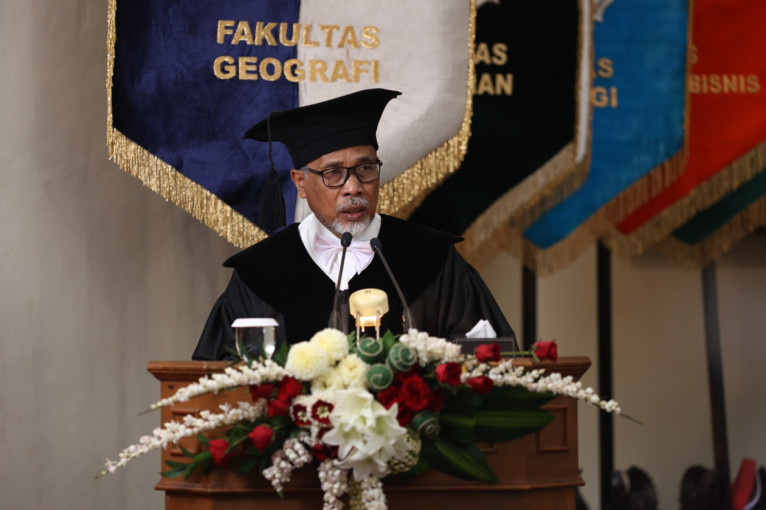
Dr. Sukamdi from the UGM Faculty of Geography was inaugurated as a professor of population geography.
In his inauguration at the UGM Senate Hall on Thursday (November 16), he delivered a speech titled “Revitalization of Population Policy in Indonesia.”
There are several reasons for choosing this topic. First, various international conventions have agreed that there is a very close relationship between the population and development, leading to a mandate to integrate population policies into development planning. Ignoring population variables in development planning makes sustainable development impossible.
Second, socio-economic and political dynamics in Indonesia have presented new challenges in the field of population. These emerging challenges must be addressed appropriately to prevent them from developing into problems hindering development.
“As mentioned earlier, population policy is an integral and inseparable part of development in other sectors. This has given rise to population-oriented development,” said the professor.
Third, according to the field of study he has been engaged in, population geography, an explanation is needed from the perspective of geography on what can contribute to the revitalization of population policy in Indonesia.
In the face of population challenges, he discussed the vision of Indonesia Emas 2045, which aims to make Indonesia a sovereign, advanced, just, and prosperous country.
This vision can be achieved through four pillars: human development and mastery of science and technology, sustainable economic development, equitable development, and the consolidation of national resilience and governance.
Professor Sukamdi mentioned that population issues are an integral part of human development and mastery of the science and technology pillar related to the development of population quality.
The results of the 2020-2050 population projections prepared by the government show that in 2045, Indonesia’s population is estimated to be 329.13 million.
This figure is achieved by reducing the total fertility rate (TFR) to the replacement level and consistently maintaining it at 2.0. The infant mortality rate is also reduced to 4.2 per 1000 live births in 2045 (Bappenas, 2023).
“If these changes can be achieved, the population composition will also change. This change is characterized by an increase in the working-age population, a decrease in the young population, and an increase in the elderly population,” Professor Sukamdi said.
He also mentioned that current population policies need revitalization, which can be done in various aspects. The first aspect is the regulatory side, where two legal products used as the basis for preparing population policies in Indonesia, namely Law Number 52 of 2009 and Presidential Regulation Number 153 of 2014, need to be revised and adjusted to current needs.
The second aspect is the approach and targets of population policies. Although other approaches are not ruled out, the integrated approach to human resource development can be used as an alternative.
This approach needs to be integrated with the life cycle approach by considering the four dimensions of the population (individual, family member, community member, and citizen) in the second stage, namely the development of population quality.
“Meanwhile, the target used in various development planning documents should be changed to the optimum population for population management. To do this, all relevant ministries and agencies responsible for population policy, namely Bappenas, Coordinating Ministry for Human Development and Culture, Ministry of Home Affairs, and BKKBN, need to sit together to realize it,” he said.
Author: Agung Nugroho
Photographer: Firsto

